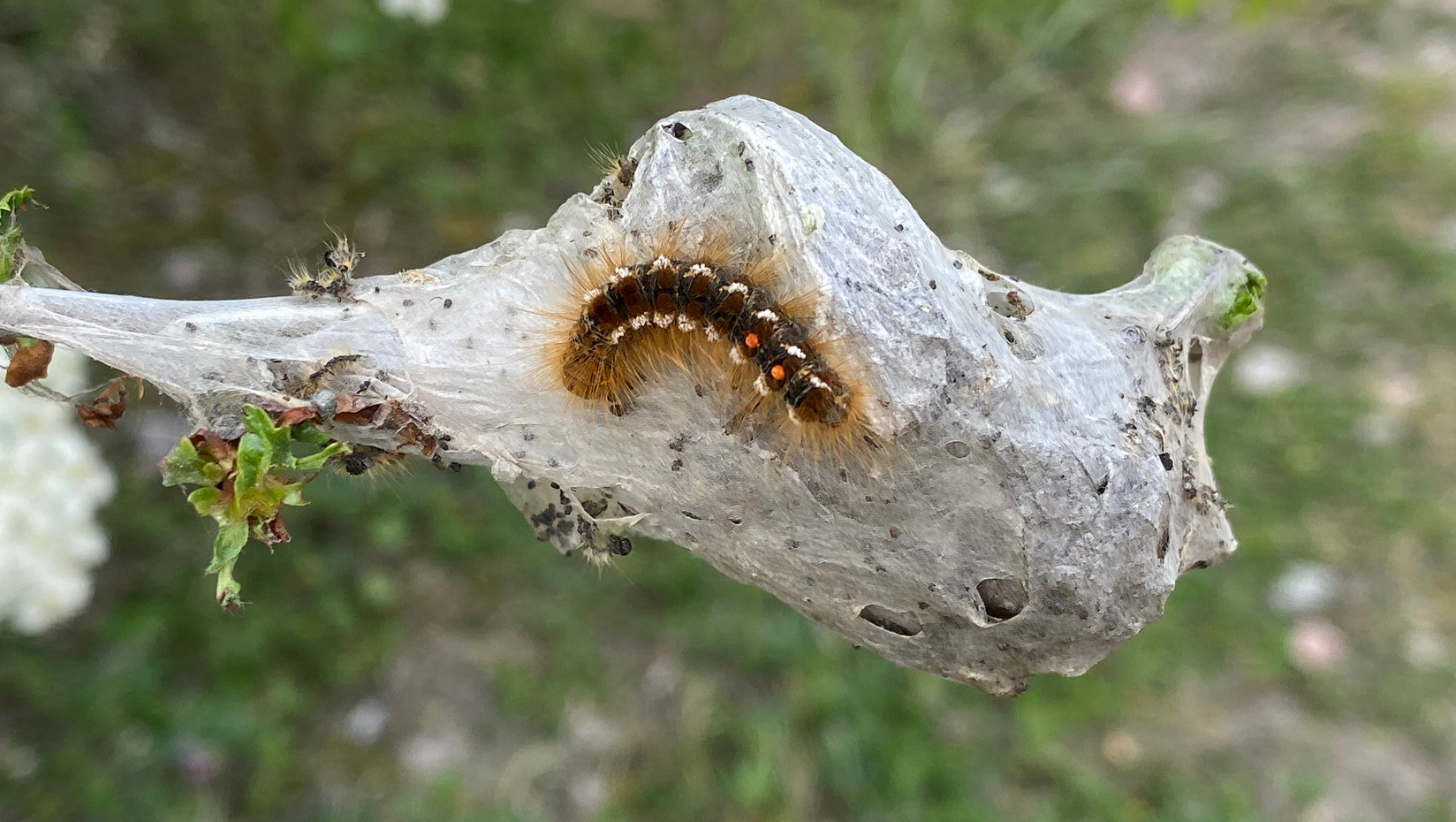
Browntail Moths at UMaine: Researchers Shed Light on Maine’s Ongoing Battle
Angela Mech, an Assistant Professor of Forest Entomology at the University of Maine, investigates browntail moths, pests known for their toxic hair causing skin rashes upon contact with humans. UMaine’s campus has witnessed a surge in browntail moth sightings, particularly the white adult moths, prompting immediate research action. A simple yet effective solution to battling the browntail moth emerges from Mech’s research: turning off the lights.
Over the past two years, Mech and her research team closely monitored the presence of winter webs on trees across the UMaine campus. Mech discussed her team’s challenges, including the moths’ toxicity to humans and the need for personal protective equipment. Despite encountering numerous challenges and constraints, Mech’s team works diligently towards comprehending and addressing the issue.
The research process includes counting the winter webs, assessing their proximity to campus light sources, and comparing the count to prior years. This process revealed an increase in winter webs found on campus between 2021 and 2022 and a correlation between browntail moth nests and their closeness to light sources, such as campus lampposts.
Mech further explains that light bulbs emitting blue or UV light, such as cool white or compact fluorescent bulbs, attract more moths. In contrast, yellow LED lights prove less appealing to these pests. From Mech’s research, two effective moth-control strategies emerge, including transitioning to yellow or orange-emitting light bulbs or simply turning off outdoor lighting in the evening, particularly from early July through mid-August.
The most recent outbreak was more widespread than usual. According to the Home and Garden IPM from Cooperative Extension, the moths, native to Europe, first arrived in Massachusetts in 1897 and quickly spread throughout New England. Mech clarified that in the late 90s and early 2000s, the Casco Bay area of Maine experienced a similar outbreak to what central Maine is currently enduring. However, previous extermination methods involved aerial applications of pesticides, which are no longer allowed in many areas of Maine.
Many other discussed extermination methods and strategies, like using a light zapper, while popular, are not effective. In fact, these techniques only exacerbate the infestation. “We have seen some articles online that suggest using a light zapper or a bucket of water with glow sticks in the bottom, and then you’ll wake up to all these dead moths,” Mech explains. “However, most of what will be caught will be males, leaving the females that may also be drawn to the light in nearby trees where they will lay their eggs. Although you may have a pile of dead moths, you may also have more winter nests, and therefore more caterpillars next spring, compared to if you turned the lights off.”
The research team actively collaborates with Maine communities to comprehensively understand the issue, utilizing surveying techniques. Mech, Dr. Mario Teisl from the UMaine School of Economics, and two UMaine graduate students, Devin Rowe, and McK Mollner, surveyed 10,000 households in Maine, evaluating the impacts of browntail moths on residents. This survey explored various aspects of understanding the pests, such as expenses and moth-induced rashes.
Preliminary observations of the survey responses yielded the following conclusions: Nearly two-thirds of respondents (62%) reported experiencing the browntail moth rash. Additionally, 87% of respondents invested money in treatments for the rash, with 10% spending over $100, highlighting how the pests impose an economic burden on residents. The rash appears to impact people’s use of Maine’s outdoor spaces, as 58% of those who contracted the rash responded that browntail moth infestations decreased their utilization of outdoor spaces. In contrast, for individuals who never experienced the rash, browntail moths discouraged 16% of respondents from using Maine’s outdoor spaces.
It is essential to note that while the survey sheds light on the challenges individuals face, there are broader aspects to consider. The congregation of adult browntail moths on campus lampposts may appear alarming, but Mech emphasizes that this life stage does not pose a significant direct threat to humans, as the toxic hairs are only on the caterpillars. Contrasting the economic and outdoor space concerns highlighted by the survey, Mech provides a reassuring perspective, noting that the primary purpose of adult moths is to mate, disperse, and naturally perish. Mech states, “The itchiness typically becomes prevalent when spring arrives, around the time when students leave for the summer.” This information emphasizes that, despite the presence of adult browntail moths this summer, the itchy season is subsiding as the fall season approaches.
Mech anticipates that the outbreak will eventually subside due to increased rainfall, but the lack of rain in 2022 may explain the heightened presence on the UMaine campus this year. Nevertheless, there is optimism that the moth population will continue diminishing, with the research offering valuable support for this ecological and public health concern. Mech’s research equips us with the insight needed to comprehend the surge and how to implement widespread changes. Additionally, her recommendations provide actionable steps to effectively mitigate the moth issue and ensure the UMaine community’s safety.
By following the guidance of Mech’s research, we can reduce the attractiveness of browntail moths on our campus. Please visit the Maine Department of Agriculture, Conservation & Forestry website FAQ’s section for further information regarding human health concerns and reducing exposure to toxic hairs.
Contact: research@maine.edu
Written by Karalyn Kutzer
